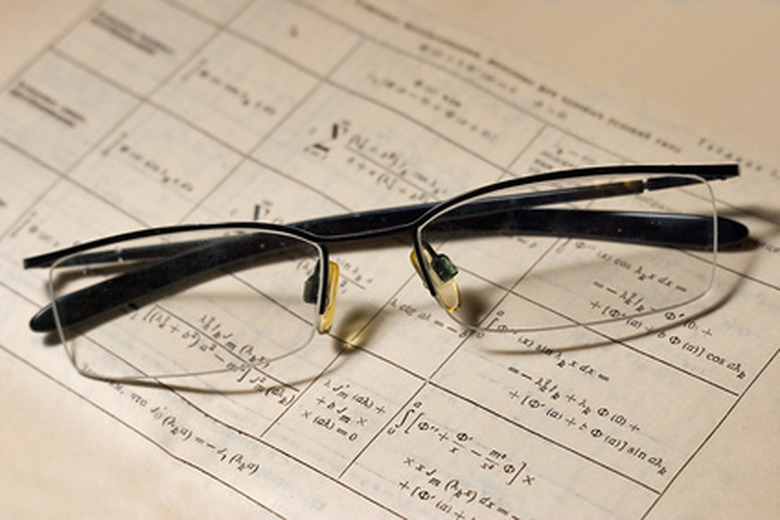How To Convert Mixed Numbers And Improper Fractions
Fractions are expressed as two numbers separated by a line. The number above the line is the numerator. The number below the line is the denominator. If the numerator is less than the denominator, then the fraction is proper. Examples include 3/4, 4/5 and 7/9. If the numerator is greater than the denominator, then the fraction is improper. Examples include 4/3, 6/5 and 20/17. Mixed numbers consist of a whole number and a proper fraction, such as 4 1/2. Improper fractions can be converted into mixed numbers and vice versa.
Step 1
Pick an example problem: 4 5/7.
Step 2
Multiply the denominator, 7, by the whole number, 4. 7 x 4 = 28.
Step 3
Take that product, 28, and add that to the numerator of the fraction, 5. 28 + 5 = 33.
Step 4
Take that sum, 33, and place it over the denominator, 7. 33/7. 4 5/7 = 33/7.
Step 5
Use the procedure in reverse to convert improper fractions into mixed numbers. Take an example problem: 33/7.
Step 6
Divide the denominator, 7, into the numerator, 33. 7 goes into 33 four times. So 4 is the whole number.
Step 7
Take the remainder and place it over the denominator, 7. 33 divided by 7 is 4. 4 x 7 = 28. 33 -28 = 5. The remainder is 5. The fraction is 5/7. 33/7 = 4 5/7.
TL;DR (Too Long; Didn't Read)
You can always check your work by converting the improper fraction back into a mixed number and vice versa.
Cite This Article
MLA
Lang, Tina Molly. "How To Convert Mixed Numbers And Improper Fractions" sciencing.com, https://www.sciencing.com/convert-mixed-numbers-improper-fractions-4546598/. 24 April 2017.
APA
Lang, Tina Molly. (2017, April 24). How To Convert Mixed Numbers And Improper Fractions. sciencing.com. Retrieved from https://www.sciencing.com/convert-mixed-numbers-improper-fractions-4546598/
Chicago
Lang, Tina Molly. How To Convert Mixed Numbers And Improper Fractions last modified March 24, 2022. https://www.sciencing.com/convert-mixed-numbers-improper-fractions-4546598/
